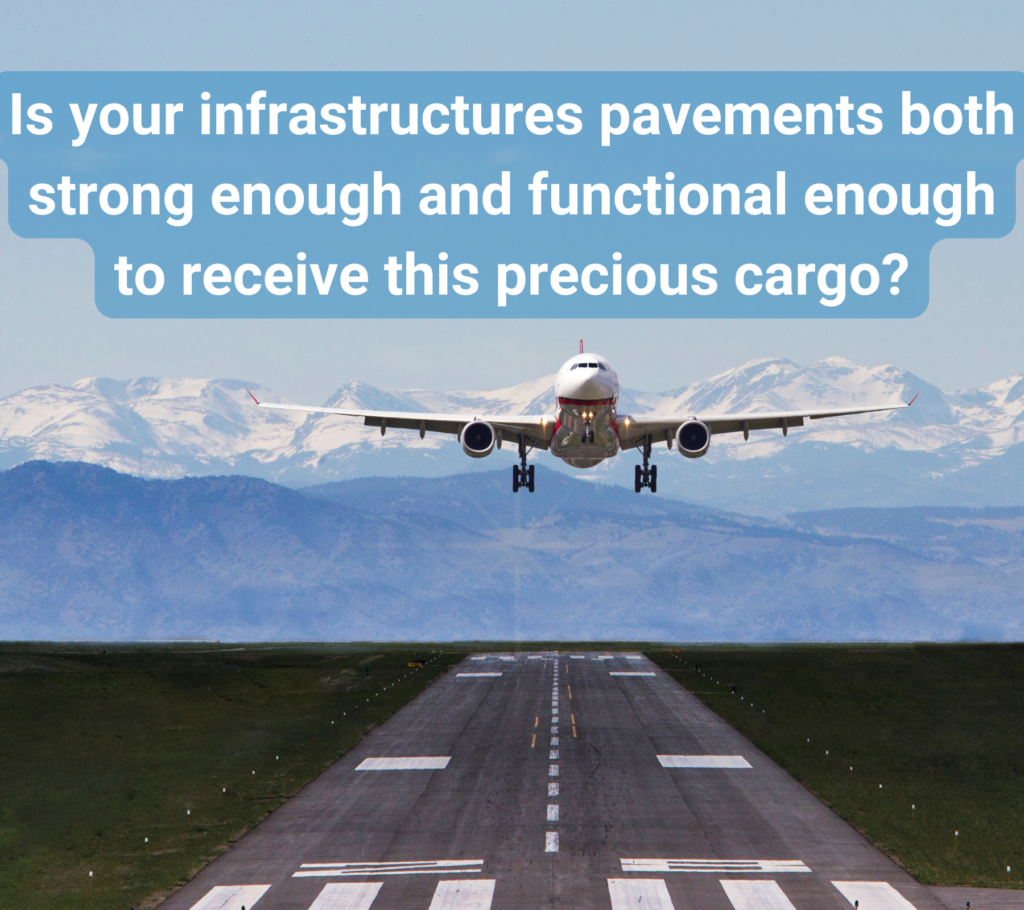16/06/2022
Why do you need to measure both PCN and PCI at your airport?
Airport pavements play a key role in the safety of passengers and aircraft during ground maneuvers, such as taxi, take off and landing, it must provide the required support, the necessary friction and stay in a proper maintenance condition not to generate any possible foreign object debris (FOD) potentially danger for the airplane and dangerous situations for the people it carries . Even a small inconvenient can generate a considerable operative issue to the flight and the airport, generating a consistent money loss or safety risk. For this reason, it is important to maintain the pavement in good condition and carry out a constant monitoring of all pavement characteristics, such as bearing capacity, friction, roughness, visual survey, etc.
Importance of the ACN/PCN parameter
The first thing you should make sure of, is that the runway has the proper structure to support to the load of the various types of aircrafts that operate over the pavement. The International Civil Aviation Organization (ICAO) prescribes as requirement the verification of the parameter relationship of parameters Aircraft Classification Number (ACN) and Pavement Classification Number (PCN). The first one represents the requested pavement strength, from a usually 20 years traffic, and second one represents the available pavement strength. If the PCN is larger than the ACN it can be concluded that from a structural point of view, the pavement can support the expected traffic. However, if the ACN value is above the PCN value, this could mean that pavement structure does not have enough strength to support the traffic for the expected time and therefore the service life will be shorter. And it is important to keep track of these values in order to have control of pavement decreasing. In many cases, you should look critically at your runway and make the necessary adjustments.
For this reason, it is a good idea to know the structural condition more accurately, which can be measured with a Heavy Weight Deflectometer (HWD). The HWD performs a non-destructive test and with the right software, one can assign the ACN from external database and calculate the PCN value directly from the measured data, providing a fast comparison.
Why use the PCI in combination with PCN
PCI and PCN together play an important role in finding the most critical pavement section inside the airport network infrastructure. The Pavement condition index (PCI) is a rating index for pavement condition based on visual examination of the surface pavement conditions and is a method for reporting the pavement condition. It is a standardized method to identify cracks and severity. Section characterized by low value of PCI can be related to poor pavement structural condition, where maybe PCN could be lower than ACN. The PCI value can be obtained by a Laser Crack Measurement System (LCMS) crack detection, that allows a fast and objective calculation of the PCI.
PCI is in general used to evaluate the condition of the surface. The results of multiple yearly investigation can be inserted inside an Airport Pavement Management System (APMS) to evaluate the decreasing performance or the pavement and determine the best moment in which maintenance needs to be applied to restore a 100 PCI value.
As mentioned above, it is important to measure both PCN and PCI, as PCN has its limitations in that it is only intended as a method for airport operators to evaluate acceptable operations of aircraft, but it has not porpoise to support pavement design or maintenance. To ensure a safe airplane operation, it is important that the infrastructures pavements are both strong enough and functional enough to receive this precious cargo.